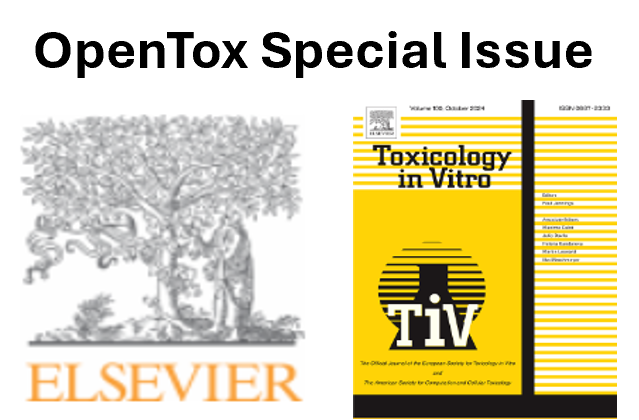
Pierre-Andre Billat, PharmD, PhD, received his PhD in 2015 and is a researcher in toxicokinetics and computational modelling at the National Institute for Industrial Environment and Risks (Ineris), France. His research focuses on understanding the relationship between exposure to chemicals and their biological effects, particularly in the context of human health. His work involves the development and application of in silico models to establish in vitro/in vivo correlations (IVIVC) and physiologically based pharmacokinetic (PBPK) models, particularly for the inhalation route of exposure, to assess the risk of exposure to various substances, including pharmaceuticals, environmental pollutants and consumer products. Providing tools to improve our understanding of chemical safety and efficacy is what drives him to work every day.
In silico as a tool for a better use of environmental in vitro toxicity assays
Pierre-André Billata, Rayane Boufalaasa,b, Remy Beaudouina,c
a INERIS, Experimental toxicology and modeling unit (TEAM), Parc ALATA BP2, Verneuil en Halatte, France
b University of technology of Compiegne, CNRS, Biomechanics and Bioengineering, Centre of recherche Royallieu - CS 60319, 60203 Compiegne Cedex, France
c UMR-I 02 SEBIO, Parc ALATA BP2, Verneuil en Halatte, France INERIS
The development of in vitro environmental toxicity models necessitates an accurate estimation of the actual exposure of cells to the chemical in the test systems (Bell et al. 2018). This estimation should consider, among other factors, non-specific binding to plastics, binding to media constituents, evaporation, and metabolism, which can lead to over- or under-estimation of the external dose when relying solely on nominal concentrations (Gülden, Mörchel, and Seibert 2001; Groothuis et al. 2019; Schreiber and Keating 2011; Kramer et al. 2012).
In this context, a complementary approach through in silico modelling would help to fill the gaps. Several models have been developed to date, including the Virtual Cell Based Assay (VCBA) model developed by the Joint Research Center (Comenges et al. 2017), and the Virtual In Vitro Distribution (VIVD) model (Fisher et al. 2019).
We have developed several model takings into account simultaneously the physiology of the living organisms (zebrafish eleutheroembryos, cell lines) with the fate of the chemical based on the VIVD estimated partition coefficients and their dynamics. From a physiological perspective, the model describes the ontogenesis of the zebrafish eleutheroembryo, encompassing hatching and cellular growth, saturation processes in uptake and metabolism when applicable. The uptake flow, polymer and protein binding, and vaporization are estimated using the included QSAR models in the absence of the aforementioned experimental data, thus facilitating the model's use for the end user. The model was tested on two datasets, bisphenol and PFAS, and demonstrated excellent toxicokinetic explanatory and predictive capacity (Billat et al. 2023).
These models will be helpful in the design of in vitro assays, particularly in relation to matters of exposure and duration. When considered alongside toxicodynamics models, they could also be incorporated into quantitative adverse outcome pathways (qAOPs), thus facilitating a more efficacious utilization of in vitro assays.
- Brouwer, Warren M. Casey, Neepa Choksi, Stephen S. Ferguson, Grazyna Fraczkiewicz, Annie M. Jarabek, Alice Ke, Annie Lumen, Scott G. Lynn, Alicia Paini, Paul S. Price, Caroline Ring, Ted W. Simon, Nisha S. Sipes, Catherine S. Sprankle, Judy Strickland, John Troutman, Barbara A. Wetmore, and Nicole C. Kleinstreuer. 2018. 'In vitro to in vivo extrapolation for high throughput prioritization and decision making', Toxicology in Vitro, 47: 213-27.
- Billat, Pierre-André, Céline Brochot, François Brion, and Rémy Beaudouin. 2023. 'A PBPK model to evaluate zebrafish eleutheroembryos’ actual exposure: bisphenol A and analogs’(AF, F, and S) case studies', Environmental Science and Pollution Research, 30: 7640-53.
- Comenges, J. M. Zaldívar, E. Joossens, J. V. Sala Benito, A. Worth, and A. Paini. 2017. 'Theoretical and mathematical foundation of the Virtual Cell Based Assay – A review', Toxicology in Vitro, 45: 209-21.
- Fisher, C., S. Siméon, M. Jamei, I. Gardner, and Y. F. Bois. 2019. 'VIVD: Virtual in vitro distribution model for the mechanistic prediction of intracellular concentrations of chemicals in in vitro toxicity assays', Toxicol In Vitro, 58: 42-50.
- Groothuis, F. A., N. Timmer, E. Opsahl, B. Nicol, S. T. J. Droge, B. J. Blaauboer, and N. I. Kramer. 2019. 'Influence of in Vitro Assay Setup on the Apparent Cytotoxic Potency of Benzalkonium Chlorides', Chem Res Toxicol, 32: 1103-14.
- Gülden, M., S. Mörchel, and H. Seibert. 2001. 'Factors influencing nominal effective concentrations of chemical compounds in vitro: cell concentration', Toxicology in Vitro, 15: 233-43.
- Kramer, N. I., M. Krismartina, A. Rico-Rico, B. J. Blaauboer, and J. L. Hermens. 2012. 'Quantifying processes determining the free concentration of phenanthrene in Basal cytotoxicity assays', Chem Res Toxicol, 25: 436-45.
- Schreiber, G., and A. E. Keating. 2011. 'Protein binding specificity versus promiscuity', Curr Opin Struct Biol, 21: 50-61.

